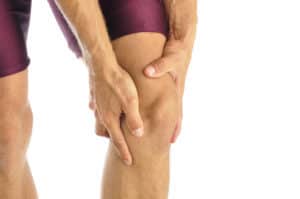Rehabilitation in Glenn Dale is a necessary component of recovery after knee replacement surgery

May 19, 2016
Our knees take on a great deal of impact, especially if you’re actively involved in sports that consist of lots of running, jumping and cutting. As a result, the knees are one of the most commonly injured regions of the body, as well as the most commonly replaced joint. If you’re considering knee replacement surgery, we’d like to remind you that we can provide exceptional rehabilitation in Glenn Dale to aide in your recovery process.
Although knee replacement surgery—or total knee arthroplasty—is such a popular procedure, the decision to have it performed should only come after all other options have been unsuccessful. Knee pain can develop from a specific injury or knee alignment issues, or it may arise from conditions that develop over time like bone disease, osteoarthritis or rheumatoid arthritis. Whatever the cause, all sources of knee pain should be treated conservatively (non-surgically) first with physical therapy, some forms of exercise and certain lifestyle modifications. If knee pain continues to be bothersome after attempting various types of conservative treatment, patients should evaluate the option of surgery with their physical therapist and an orthopedic surgeon.
If you’re found to be a good candidate for knee replacement surgery, your surgeon will explain the procedure itself, as well as the preparation and recovery process that will come with it. Physical therapy is an integral component of this entire process, and your physical therapist can help ensure that the surgery is successful by providing evaluation and treatment before and after the procedure.
Before surgery
- The better shape you’re in before surgery, the better your results will be when coming out of it, especially in the short term
- Your physical therapist will teach you a number of exercises and show you how to walk with an assistive device (e.g. cane or crutches) after the procedure
- They will also discuss important precautions and adaptations to make at home
Immediately after surgery
- Most patients will stay in the hospital for 2-3 days following surgery
- Rehabilitation typically begins almost immediately after waking up: your physical therapist will attempt to have you standing up and walking around within 24 hours, which is a critical component of recovery
- Your physical therapist will help you with the process of walking with an assistive device again and instruct you on how to get up from bed and chairs
- Some strengthening and flexibility exercises will also begin at this time
After being discharged from hospital
- The core of your recovery begins after the hospital once you begin with rehabilitation in Glenn Dale at our clinic; the goal of this portion of treatment is to help you regain your strength, flexibility and physical abilities
- Range of motion exercises: swelling and pain may make it difficult to move normally, but these exercises are designed to help you restore your flexibility
- Strengthening exercises: muscle weakness in the thigh and lower leg is a another big problem and regaining your strength is essential; as you rebuild strength with these targeted exercises, eventually you’ll no longer need your cane or crutches
- Body awareness and balance training: these specialized training exercises will help your muscles relearn how to respond to changes that require good balance and body awareness, such as uneven sidewalks or rocky ground
- Activity-specific training: as you gradually regain your physical capacity, your treatment program will progress to include specific exercises targeted exercises for your sport or occupation
Deciding to have surgery can be a difficult and overwhelming process, but rehabilitation in Glenn Dale can help by guiding you at every step along the way. If you’re scheduled for knee replacement surgery, contact us at CAM Physical Therapy at 301-853-0093 to schedule an appointment at any of our four locations in Laurel, Hyattsville, Glenn Dale/Bowie or Parkville/Baltimore, MD today.